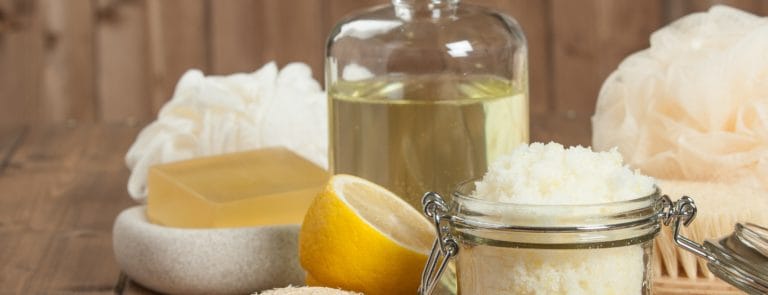20% off €35
Code:EASTER
Hyperpigmentation and our favourite home remedies

Hyperpigmentation is incredibly common and generally harmless, but can be undesirable. Here's a few home remedies to even out skin tone.
If you’re concerned with hyperpigmentation, then you’re not alone. It it’s incredibly common and generally harmless, but can be undesirable due to its blemish-like appearance.
Hyperpigmentation refers to the small, dark patches that form on the skin, usually of the face, hands, arms and chest. It appears when your skin produces too much of the pigment melanin as a result of exposure to UV rays from the sun.
There are also other factors which can cause hyperpigmentation, including hormonal changes such as during pregnancy, acne scars, as well as certain illnesses.
It is normal for sun spots and freckles to form on our skin as we go through life, but if they are becoming a concern, then you should know there are certain steps to take to improve their appearance, and to stop new spots forming.
Protect your skin from the sun
The number one cause of hyperpigmentation is exposure to UV rays from the sun,1 so be sure to wear a broad-spectrum sunscreen every day with a high SPF of at least 30, and re-apply throughout the day. Doing this will also protect against existing hyperpigmentation getting any darker. On very sunny days, wear loose clothing and a hat. If you have pale skin, you will be especially prone to UV-induced hyperpigmentation, so you will need to take extra care to protect your skin.Handpicked content: How to keep your skin clear and protected in the sun
Exfoliation
Exfoliating your hyperpigmentation spots with a scratchy sponge is not advised! Hard physical exfoliation or scrubbing is likely to damage your skin, so use a gentle facial exfoliator 1-3 times a week and never rub the skin on your face. If you want to keep it natural, you could make a simple DIY sugar exfoliator by mixing white or brown sugar with a few teaspoons of coconut oil. Gently massage into a clean face using circular motions and rinse, and follow with a rich moisturiser. Anecdotal evidence suggests that fruits high in citric acid such as lemons and grapefruits could help fade the appearance of hyperpigmentation due to the acid’s astringent qualities and potential effect on cell turnover.2 You could try making a simple lemon toner by diluting lemon juice with green tea and applying to the face with a cotton pad. Be careful applying acidic fruits directly to the skin, as they can be too harsh for sensitive skin. It is advisable to exfoliate at night before you go to bed, because your skin is extra sensitive to sunlight after exfoliation. Remember to wear sunscreen in the morning, even if it’s cloudy. You could consider chemical and acid exfoliants to help with severe hyperpigmentation. Ingredients such as retinols, salicylic acid and glycolic acid are widely available in creams and serums which work to remove dark spots from the surface of the skin and can offer noticeable results. They work to remove the very top layer of your skin, revealing new skin underneath and eventually fading the marks. 3 You should always consult a doctor or dermatologist before trying a chemical exfoliation, as they can be too strong for some people with sensitive skin.Handpicked content: How to exfoliate properly
Eat the right diet
Eating a diet rich in antioxidants and skin-protecting vitamins should be part of your plan to combat hyperpigmentation. Eat plenty of foods rich in vitamin E, such as berries, nuts and seeds, wholegrains, eggs, and green leafy vegetables which can help the skin cope with oxidative damage and stress. Also, seek out omega 3 fats such as oily fish, chia seeds and walnuts, which will promote skin hydration and elasticity. Avoid cocktails in the sun, as alcohol has been proven to increase the risk of sunburn.4Advice is for information only and should not replace medical care. Please consult a doctor or healthcare professional before trying any remedies.
1. [Online] https://www.ncbi.nlm.nih.gov/pmc/articles/PMC3400707/.
2. [Online] https://www.livestrong.com/article/121631-products-rid-dark-spots-face/.
3. [Online] https://www.eucerin.co.uk/skin-concerns/uneven-skin/hyperpigmentation.
4. [Online] https://www.ncbi.nlm.nih.gov/pubmed/23147451.



